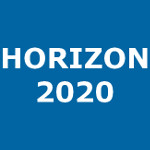Modulation of cortical slow oscillatory rhythm by GABAB receptors: an in vitro experimental and computational study
Perez-Zabalza, Maria (Universidad de Zaragoza) ; Reig, Ramon ; Manrique, Jesus ; Jercog, Daniel ; Winograd, Milena ; Parga, Nestor ; Sanchez-Vives, Maria V.
Resumen: Slow wave oscillations (SWOs) dominate cortical activity during deep sleep, anaesthesia and in some brain lesions. SWOs are composed of periods of activity (Up states) interspersed with periods of silence (Down states). The rhythmicity expressed during SWOs integrates neuronal and connectivity properties of the network and is often altered under pathological conditions. Adaptation mechanisms as well as synaptic inhibition mediated by GABAB receptors (GABAB-Rs) have been proposed as mechanisms governing the termination of Up states. The interplay between these two mechanisms is not well understood, and the role of GABAB-Rs controlling the whole cycle of the SWO has not been described. Here we contribute to its understanding by combining in vitro experiments on spontaneously active cortical slices and computational techniques. GABAB-R blockade modified the whole SWO cycle, not only elongating Up states, but also affecting the subsequent Down state duration. Furthermore, while adaptation tends to yield a rather regular behaviour, we demonstrate that GABAB-R activation desynchronizes the SWOs. Interestingly, variability changes could be accomplished in two different ways: by either shortening or lengthening the duration of Down states. Even when the most common observation following GABAB-Rs blocking is the lengthening of Down states, both changes are expressed experimentally and also in numerical simulations. Our simulations suggest that the sluggishness of GABAB-Rs to follow the excitatory fluctuations of the cortical network can explain these different network dynamics modulated by GABAB-Rs.
Idioma: Inglés
DOI: 10.1113/JP279476
Año: 2020
Publicado en: JOURNAL OF PHYSIOLOGY-LONDON 598, 16 (2020), 3439-3457
ISSN: 0022-3751
Factor impacto JCR: 5.182 (2020)
Categ. JCR: PHYSIOLOGY rank: 12 / 81 = 0.148 (2020) - Q1 - T1
Categ. JCR: NEUROSCIENCES rank: 76 / 273 = 0.278 (2020) - Q2 - T1
Factor impacto SCIMAGO: 1.802 - Sports Science (Q1) - Physiology (Q1)
Financiación: info:eu-repo/grantAgreement/EC/H2020/945539/EU/Human Brain Project Specific Grant Agreement 3
Financiación: info:eu-repo/grantAgreement/ES/MINECO/BFU2017-85048-R
Tipo y forma: Artículo (Versión definitiva)
Área (Departamento): Área Teoría Señal y Comunicac. (Dpto. Ingeniería Electrón.Com.)
 Debe reconocer adecuadamente la autoría, proporcionar un enlace a la licencia e indicar si se han realizado cambios. Puede hacerlo de cualquier manera razonable, pero no de una manera que sugiera que tiene el apoyo del licenciador o lo recibe por el uso que hace.
Debe reconocer adecuadamente la autoría, proporcionar un enlace a la licencia e indicar si se han realizado cambios. Puede hacerlo de cualquier manera razonable, pero no de una manera que sugiera que tiene el apoyo del licenciador o lo recibe por el uso que hace.
Exportado de SIDERAL (2025-01-28-14:58:00)
Visitas y descargas
Idioma: Inglés
DOI: 10.1113/JP279476
Año: 2020
Publicado en: JOURNAL OF PHYSIOLOGY-LONDON 598, 16 (2020), 3439-3457
ISSN: 0022-3751
Factor impacto JCR: 5.182 (2020)
Categ. JCR: PHYSIOLOGY rank: 12 / 81 = 0.148 (2020) - Q1 - T1
Categ. JCR: NEUROSCIENCES rank: 76 / 273 = 0.278 (2020) - Q2 - T1
Factor impacto SCIMAGO: 1.802 - Sports Science (Q1) - Physiology (Q1)
Financiación: info:eu-repo/grantAgreement/EC/H2020/945539/EU/Human Brain Project Specific Grant Agreement 3
Financiación: info:eu-repo/grantAgreement/ES/MINECO/BFU2017-85048-R
Tipo y forma: Artículo (Versión definitiva)
Área (Departamento): Área Teoría Señal y Comunicac. (Dpto. Ingeniería Electrón.Com.)
Exportado de SIDERAL (2025-01-28-14:58:00)
Enlace permanente:
Visitas y descargas
Este artículo se encuentra en las siguientes colecciones:
Artículos > Artículos por área > Teoría de la Señal y Comunicaciones
Registro creado el 2025-01-28, última modificación el 2025-01-28
